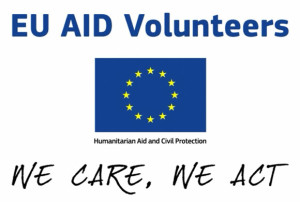ALNAP (Active Learning Network for Accountability and Performance in Humanitarian Action) has a fantastic blog posting, Insecurity in the Humanitarian Cyberspace: A Call for Innovation, by Kristin Bergtora Sandvik. An excerpt:
“Over the last two decades, innovations have fueled the creation of a humanitarian cyberspace. It is now time for the task of addressing the challenges posed by the humanitarian cyberspace to be prioritised on the humanitarian innovation agenda… The traditional notion that the ´virtual` world is a different social space than the ´real world` is by now obsolete, also in the humanitarian context… While the traditional threats to the humanitarian space persist, the humanitarian cyberspace broadens the scope of humanitarian action – which means that, instead of shrinking, the humanitarian space is actually poised to enter an expanding frontier. As illustrated by the increasing reliance on mobile cash transfers in food aid, the humanitarian cyberspace also offers new options for the constitution and distribution of relief. The notion that access to information and humanitarian data constitutes a form of relief in its own right illustrates how technology is reshaping the very definition of aid. The emergence of ‘digital humanitarians’ exemplifies a shift in the understanding of who is an aid provider and the possibilities for providing aid from a distance. At the same time, the humanitarian cyberspace has engendered a new set of threats, which impinge on the humanitarian space and which needs to be taken more seriously in the context of humanitarian innovation.”
Another excerpt:
“The use of social media by fieldworkers may undermine principles of neutrality and impartiality and endanger recipients of humanitarian aid as well as aid workers. The dilemma is well-known: In the humanitarian field, the free speech of aid workers must be balanced against the vulnerability of aid recipients and the particular dynamics of the emergency context. However, social media exacerbates the risk, also for humanitarians themselves…While the medical and social work professions (among others) are developing more robust, binding and enforceable industry standards with respect to social media, the humanitarian sector is lagging behind. Facebook, Twitter and Instagram are largely perceived as ‘private’ platforms, even when used actively during and for work. Additionally, the tension between security concerns and fundraising priorities seems to exacerbate the difficulty of developing strong and innovative approaches to responsible social media use.”
This entire blog is a MUST read for anyone working in international development, as well as any nonprofit, government or other mission-based organization. It is based on a roundtable at the 4th bi-annual IHSA World Conference on Humanitarian Studies and Sandvik’s recent article in the Third World Quarterly ‘The humanitarian cyberspace: shrinking space or an expanding frontier?’
The Active Learning Network for Accountability and Performance in Humanitarian Action (ALNAP) was established in 1997, as a mechanism to provide a forum on learning, accountability and performance issues for the humanitarian sector.







